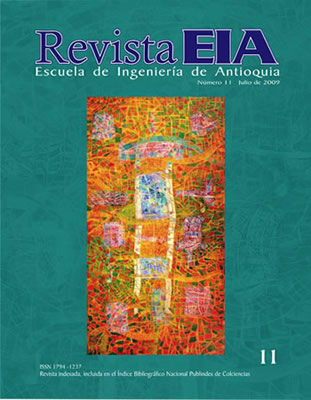Diseño y construcción de un prototipo de interfaz cerebro-computador para facilitar la comunicación de personas con discapacidad motora (Design and construction of a brain-computer interface prototype to facilitate the communication of people with motor
Diseño y construcción de un prototipo de interfaz cerebro-computador para facilitar la comunicación de personas con discapacidad motora (Design and construction of a brain-computer interface prototype to facilitate the communication of people with motor


This work is licensed under a Creative Commons Attribution-NonCommercial-NoDerivatives 4.0 International License.
Copyright statement
The authors exclusively assign to the Universidad EIA, with the power to assign to third parties, all the exploitation rights that derive from the works that are accepted for publication in the Revista EIA, as well as in any product derived from it and, in in particular, those of reproduction, distribution, public communication (including interactive making available) and transformation (including adaptation, modification and, where appropriate, translation), for all types of exploitation (by way of example and not limitation : in paper, electronic, online, computer or audiovisual format, as well as in any other format, even for promotional or advertising purposes and / or for the production of derivative products), for a worldwide territorial scope and for the entire duration of the rights provided for in the current published text of the Intellectual Property Law. This assignment will be made by the authors without the right to any type of remuneration or compensation.
Consequently, the author may not publish or disseminate the works that are selected for publication in the Revista EIA, neither totally nor partially, nor authorize their publication to third parties, without the prior express authorization, requested and granted in writing, from the Univeridad EIA.
Show authors biography
Una interfaz cerebro-computador (ICC) es un sistema de comunicación que permite generar una señal de control a partir de señales cerebrales como los ritmos sensorimotores y los potenciales evocados y, por consiguiente, constituye una alternativa novedosa de comunicación para personas con discapacidad motora seria (como aquellas que padecen esclerosis lateral amiotrófica, ELA). Este proyecto propone el desarrollo de un prototipo de ICC basado en el registro de potenciales evocados cognitivos P-300 mediante electroencefalografía. El prototipo usa un electroencefalógrafo de seis canales para la adquisición de las señales, y por medio de una matriz de estimulación visual que contiene las letras del abecedario e íconos asociados a ellas permite que el usuario escriba palabras o elabore mensajes con los íconos. Para procesar las señales (filtración, diezmado, entre otros) se utilizaron los programas BCI2000 y MATLAB 7.0. Este último se empleó para programar tres algoritmos lineales de traslación (análisis lineal del discriminante, solución por mínimos cuadrados y análisis lineal del discriminante paso a paso) que permitieran traducir los potenciales evocados en señales de comunicación.
Abstract: A brain-computer interface (BCI) is a communication system that translates a brain signal (e.g. sensorimotor rhythms, evoked potentials) into a control signal and, therefore, constitutes an innovative communication alternative for people with severe motor disability (such as patients with amyotrophic lateral sclerosis). This project proposes the development of a BCI prototype based on the recording of P300 cognitive potentials using electroencephalography. The prototype uses a six-channel electroencephalograph to acquire the signals, and through a visual stimulation matrix containing the letters of the alphabet and icons associated to each one gives the user the possibility of writing words or elaborating messages with the icons. To process the signals (filtering and decimation, among other methods), the software BCI2000 and MATLAB 7.0 were used. The latter was used to program three different linear translation algorithms (linear discriminant analysis, least squares analysis and stepwise linear discriminant analysis), in order to translate the recorded evoked potentials into communication signals.
Article visits 305 | PDF visits 196
